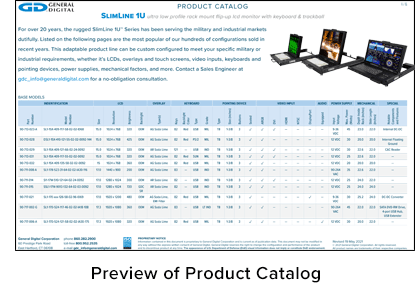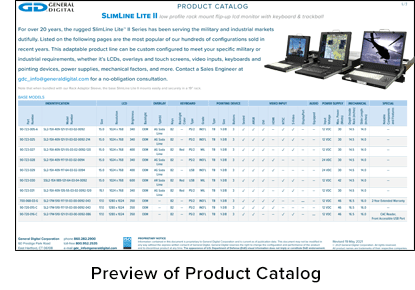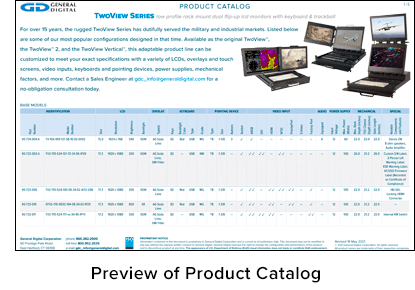If you take a walk out onto our production floor, you’ll see some of the most cutting-edge technology on the market—robots, medical devices, waterproof smart displays, and more.
You’ll also see equipment that was designed 20+ years ago being built and serviced alongside our newest designs because some of our long-term customers still need those “legacy models.”
It might sound easy to maintain equipment that was originally designed and developed before I was even born. However, as supply chains evolve and change over time, so does the availability of crucial aspects of the Bill of Materials for a particular part.
We wouldn’t be able to continue building these legacy systems without a dedicated approach to Configuration Management & Revision Control.
So what exactly is Configuration Management & Revision Control?
Lets ask the experts.
Military Handbook MIL-HDBK-61A(SE) defines configuration management (CM) as “a process for establishing and maintaining consistency of a product’s performance, function and physical attributes with its requirements, design and operational information throughout its life.“
Essentially, configuration management & revision controls mean that care is taken throughout the product lifecycle to ensure that the product will perform the same functions in the same environment as its predecessors and successors. This is called a Form, Fit, and Function replacement, or FFF.
Why is this needed?
You might be asking, “Why would I buy a different part that does the same exact thing as the old part? Can’t I just buy the old part?”
Not always.
The most common use case for a Configuration Management & Revision Control policy in the electronics industry is when a sub-component (for displays, something like a video controller or an LCD panel) go End-of-Life (EOL), meaning that the component is no longer offered or supported by its manufacturer.
However, just because a component is End-of-Life doesn’t mean your program is.
What a robust Configuration Management & Revision Control policy does in these circumstances is maintain product continuity in the case of component obsolescence.
Let’s take an example ECN (Engineering Change Notice) log for our P/N 90-700-058, which is now on its 10th iteration:
| Rev | Date | Reason |
| – | 11/21/00 | Initial Release |
| A | 4/13/01 | Updates for production |
| B | 9/14/01 | Update rack mount sleeve per customer request |
| C | 10/2/03 | Add cable guide per customer request |
| D | 5/18/05 | Update video controller due to EOL |
| E | 11/30/06 | Update LCD due to EOL |
| F | 10/16/09 | Update LCD due to EOL |
| G | 5/21/10 | Update LCD due to EOL. Update video controller due to EOL. Update backlight inverter due to EOL. |
| H | 5/2/13 | Gloss rating of glass overlay updated due to availability of existing overlay |
| J | 6/7/19 | Update LCD due to EOL. Update video controller due to EOL. |
The first few revisions (-A, -B, and -C) did affect the product functionality slightly, but as the part was custom-designed for a single customer and hadn’t yet been sold elsewhere, we maintained the revisions on the original baseline part to make it easier for our customer.
This example illustrates that the base part number (no revisions) is not always the gold standard or baseline configuration. As the product undergoes customer evaluation and field testing, it may require modifications to the configuration to optimize its performance.

Of course, all of these changes were customer driven and approved. In the example above, the 90-700-085-C represents the finalized baseline configuration, to which all future configurations are compared.
This means that everything from -D to -J is a FFF replacement to the -C. Over the course of 18 years, through eight EOL announcements and one availability issue, we’ve maintained this part number for our customer.
I’ll tell you a secret: This part is for a highly specialized application, and ordered by only a few customers.
In fact, in 2014 we created a replacement to the 90-700-058 (which saves rack space and improves graphics) and introduced it to the market. Since it wasn’t a FFF replacement to the 90-700-058, we introduced a new part number (P/N 90-2717-001) that is used on contemporary programs.
However, those few customers who purchased the older system cannot justify ordering the new system, for reasons we will discuss below. That means that on top of supporting this part for 18 years, for the last 7 years it has been a technically inferior, obsolete solution that we maintain because it is what’s best for our customer.
That’s Configuration Management & Revision Control.
Why does this matter?
Let’s ask the experts again.
The ANSI/EIA-649 Standard for Configuration Management summarizes the benefits of CM from an industry viewpoint, as follows:
- Product attributes are defined. Provides measurable performance parameters. Both Buyer and Seller have a common basis for acquisition and use of the product.
- Product configuration is documented and a known basis for making changes is established. Decisions are based on correct, current information. Production repeatability is enhanced.
- Products are labeled and correlated with their associated requirements, design and product information. The applicable data (such as for procurement, design or servicing the product) is accessible, avoiding guesswork and trial and error.
- Proposed changes are identified and evaluated for impact prior to making change decisions. Downstream surprises are avoided. Cost and schedule savings are realized.
- Change activity is managed using a defined process. Costly errors of ad hoc, erratic change management are avoided.
- Configuration information, captured during the product definition, change management, product build, distribution, operation, and disposal processes [the equivalent of the DoD acquisition life cycle], is organized for retrieval of key information and relationships, as needed. Timely, accurate information avoids costly delays and product down time; ensures proper replacement and repair; and decreases maintenance costs.
- Actual product configuration is verified against the required attributes. Incorporation of changes to the product is verified and recorded throughout the product life. A high level of confidence in the product information is established.
It’s no secret that defense and government buyers are price conscious. They want to pay the lowest possible amount for a product that does exactly what they need, and are not interested in upgrading it every year, unlike those who must have the latest iPhone model.
To that end, our engineers have implemented a modular design process to make it easier to replace components when obsolescence issues arise.
Reduced Cost of Ownership – Partnership Over Product
By reducing the impact of forced design changes due to obsolescence issues, we significantly extend product life cycles and lower the non-recurring design change expenses (NRE) by making it easier and more cost-effective to customize products to meet specifications.
By providing a FFF replacement with complete documentation support, the product may not require recertification and its associated costs, and thus reduces the total lifetime cost of the program.
If there are associated redesign costs, or if the change to the Bill of Materials is deemed too significant to qualify the new revision by similarity, our customers still have an opportunity to place a Last Time Buy to reserve stock of the component for future builds.
This all alludes to the ultimate benefit of our approach to configuration management and revision control—reduced total cost of ownership. By providing last-time buy options, backwards compatible replacements, and reducing or eliminating the need for recertification, redesign, and re-documentation, we offer something that traditional COTS manufacturers cannot—a partnership instead of a product.
General Digital is not just a supplier—we are more like an extension of your engineering department.
Over the past 50 years, we’ve found that this approach allows us to fill a vital role in the defense and government markets. Other companies do not take the same dedicated approach to design life cycle configuration that we do. Your 10 pc or 100 pc order is just a rounding error to a massive consumer-focused electronics manufacturer. To us, it’s our core business model.
Being a private, family-owned company, we are able to make decisions that are better for our customer. We understand that dedication to Configuration Management & Revision Control means that we don’t just stand behind our products, we stand behind the end user’s programs our products support. And it is an honor to work for you.
About General Digital
General Digital Corporation has provided world-class engineering services to the Military, Government, Industrial, Medical, Aviation, Commercial, and other industries since our inception in 1973. For more information about our company or to speak with a Sales Engineer, Contact Us or call (860) 282-2900. Below are some catalogs outlining some of our most popular product lines.




